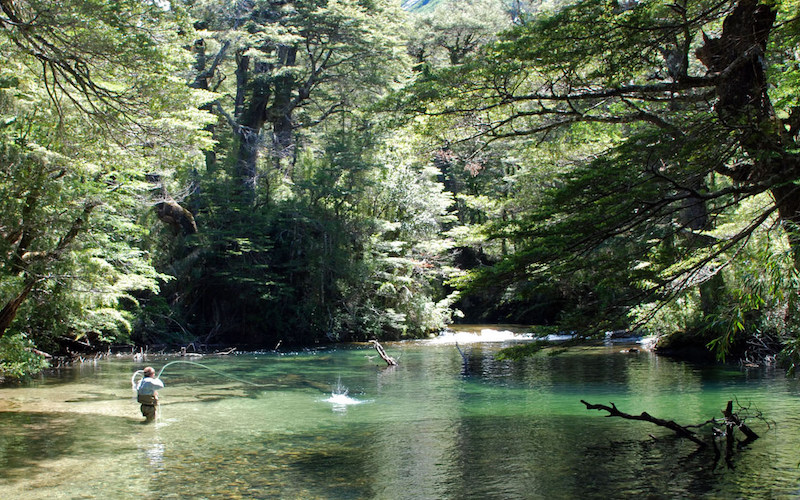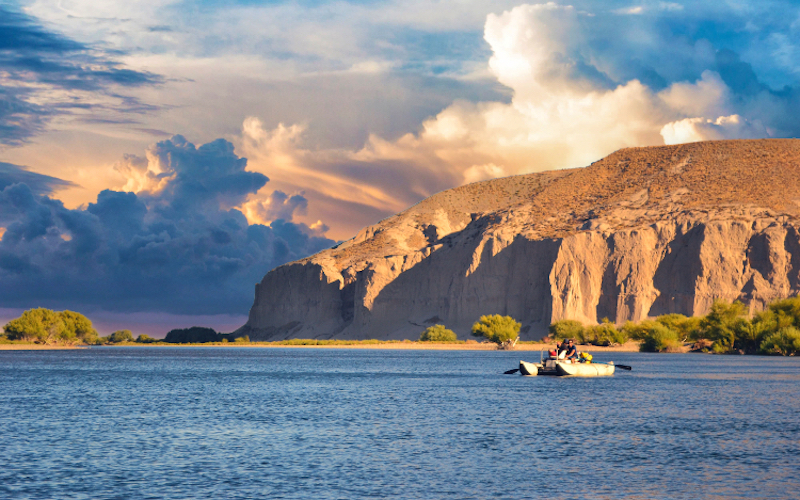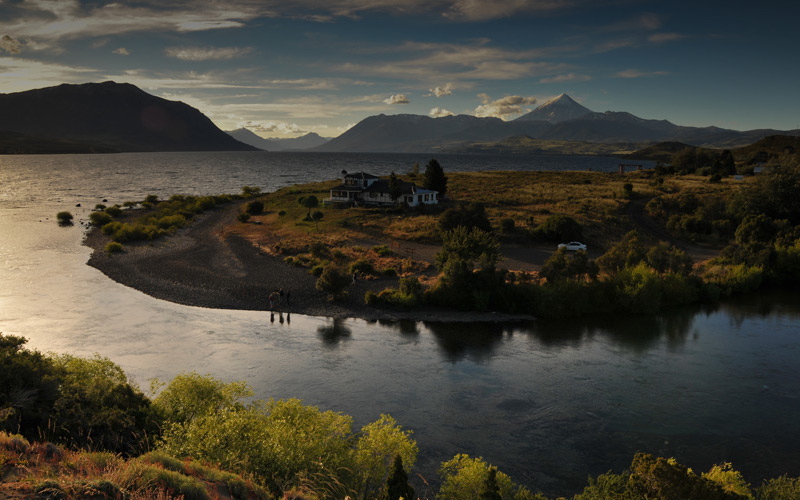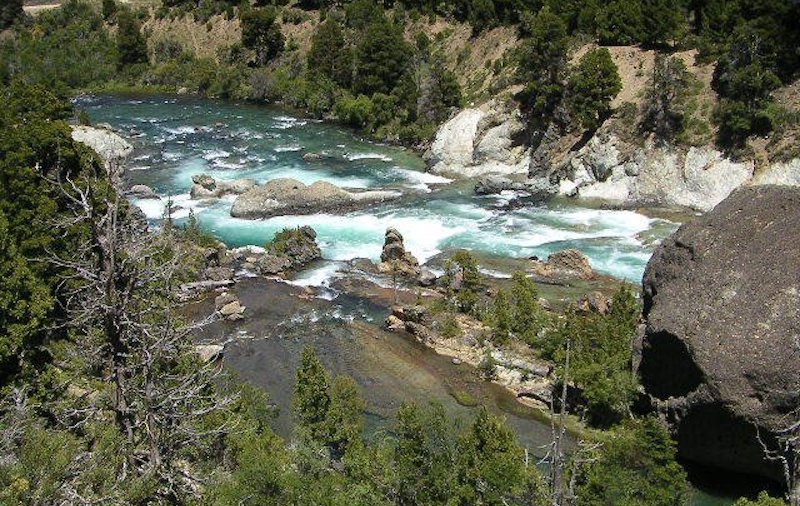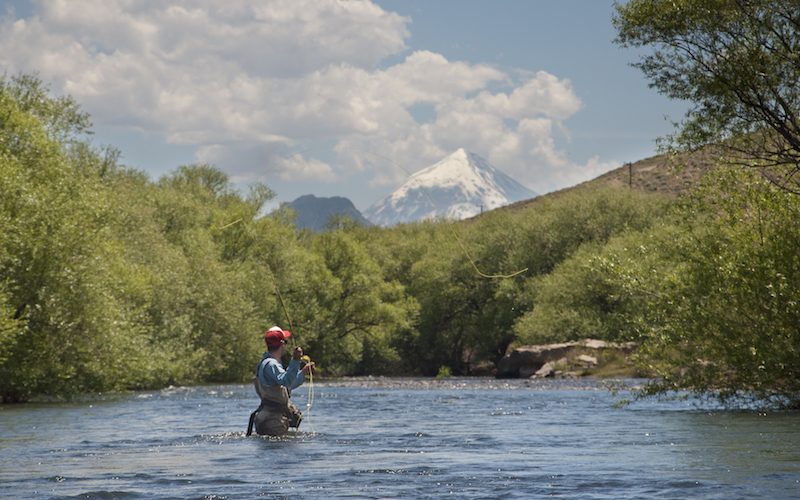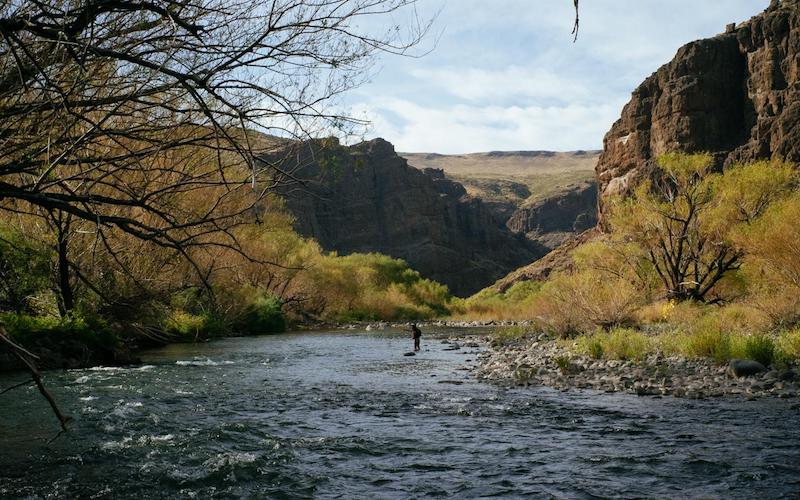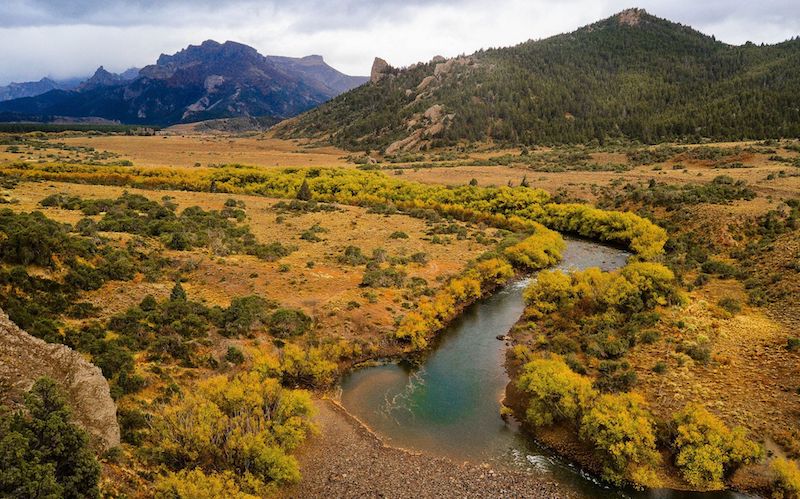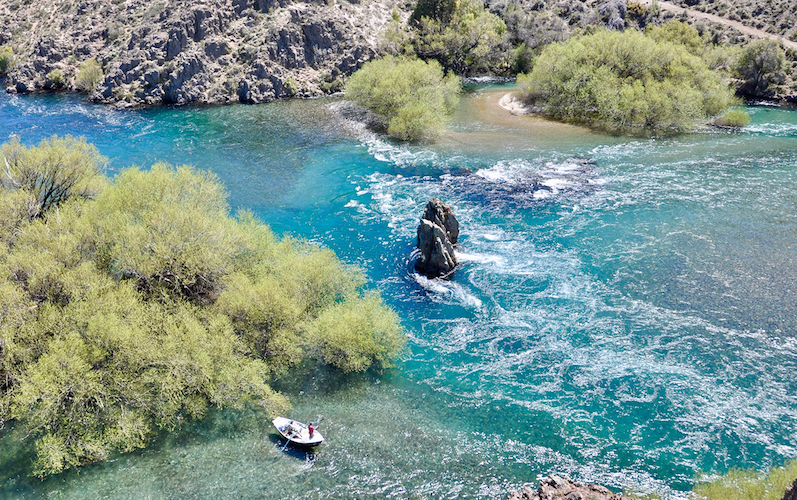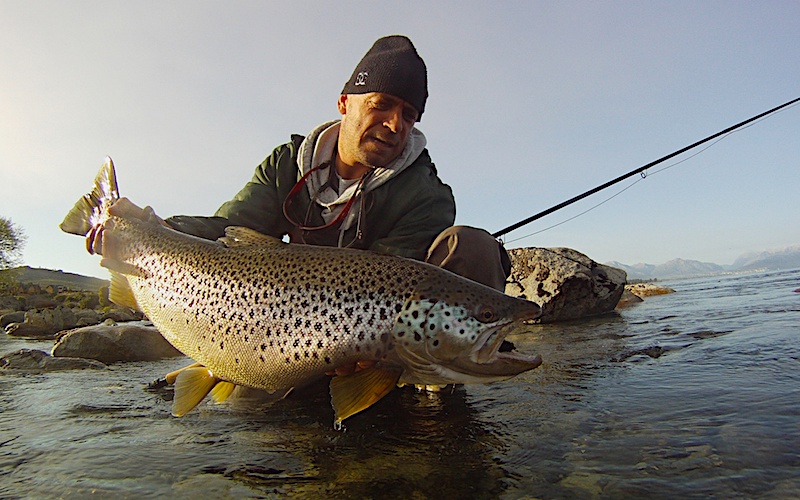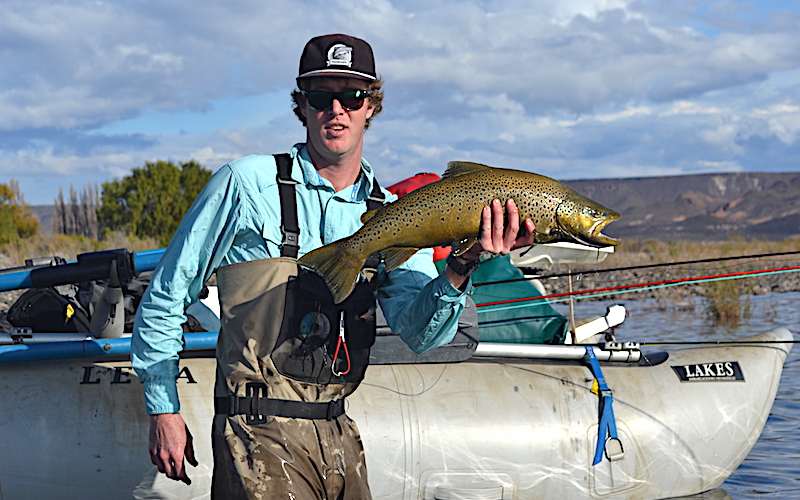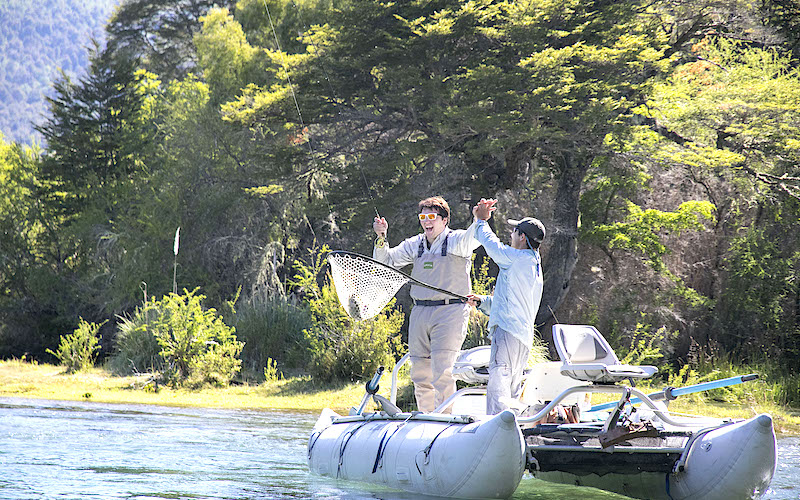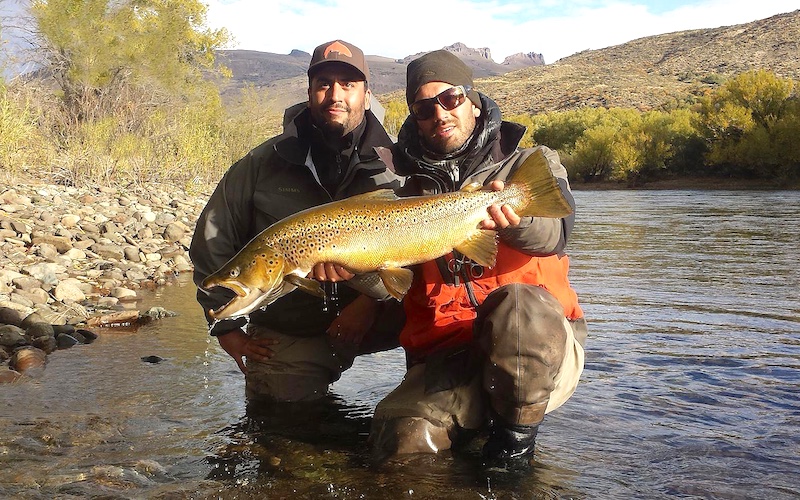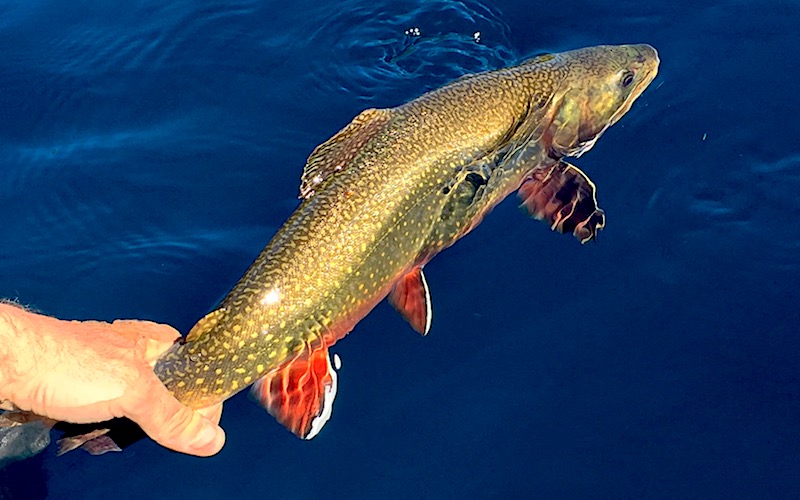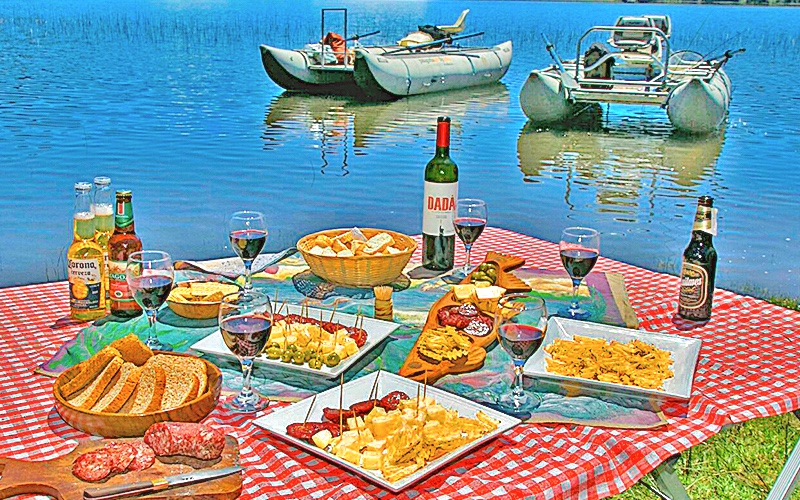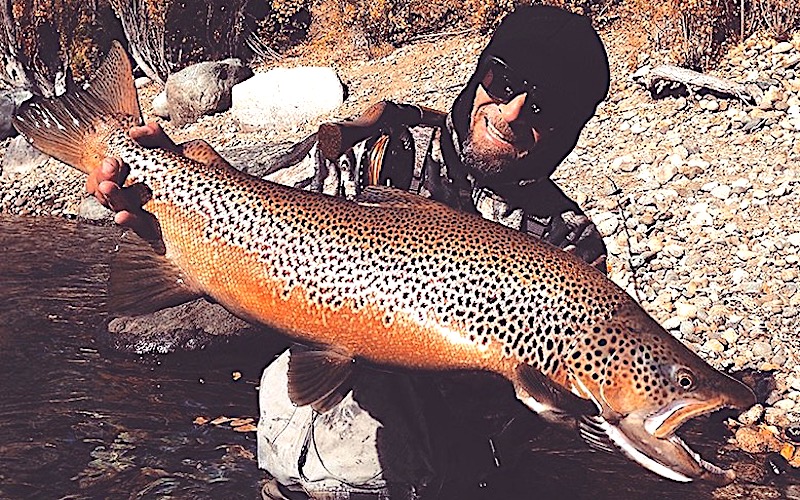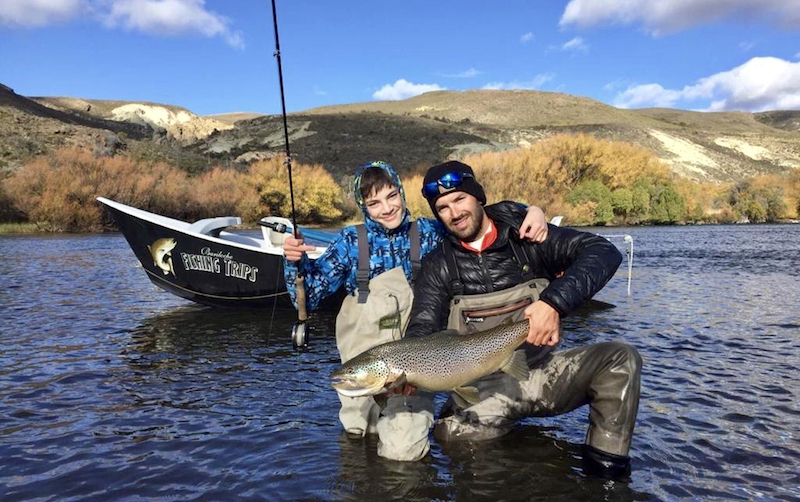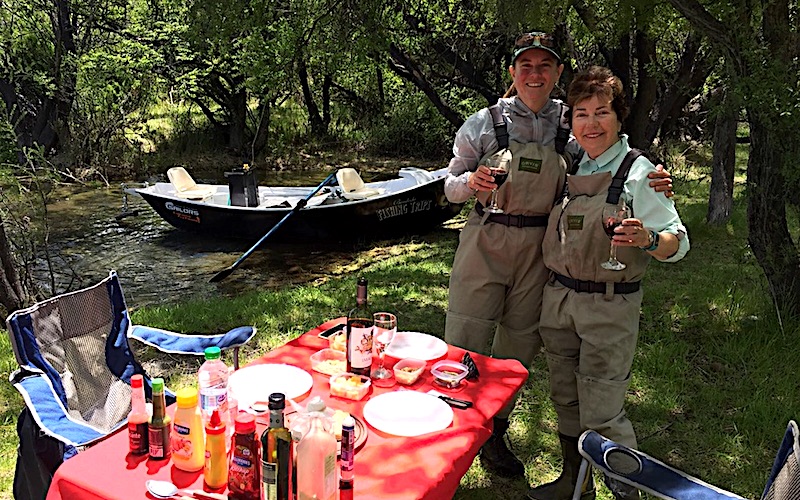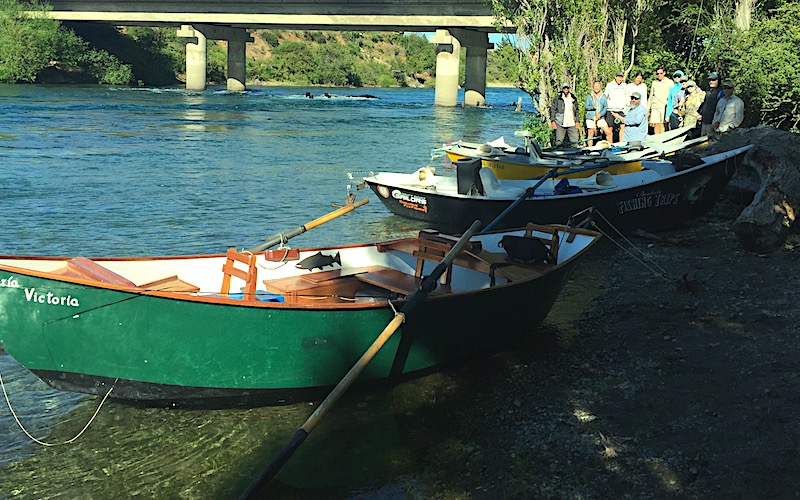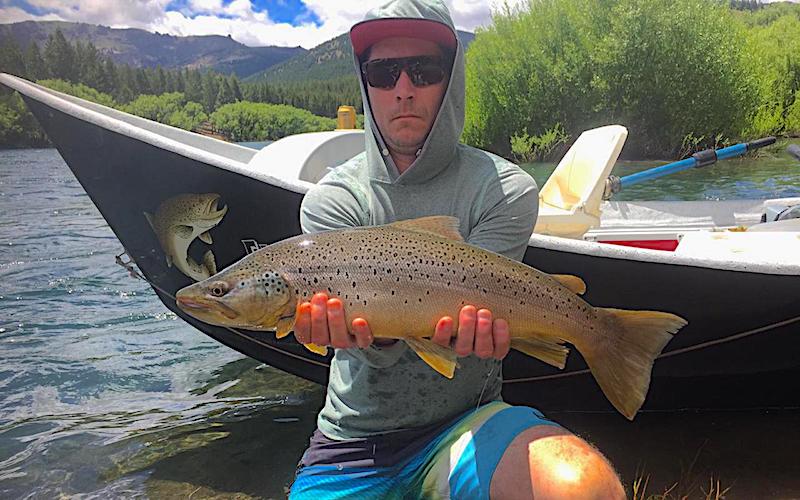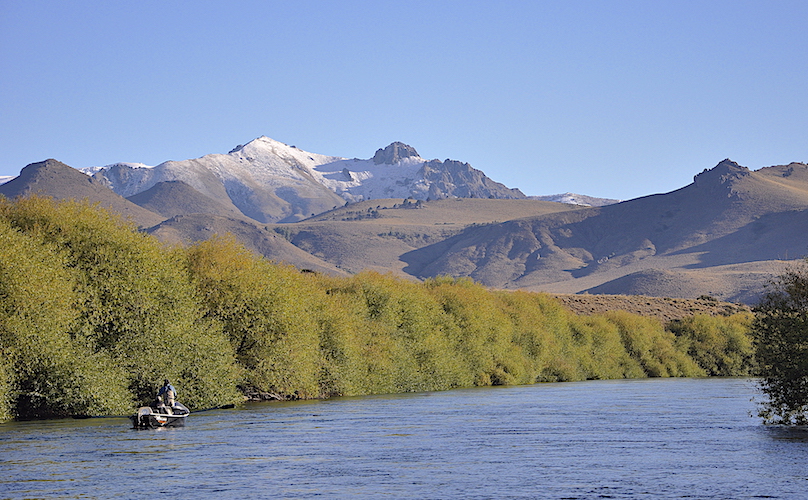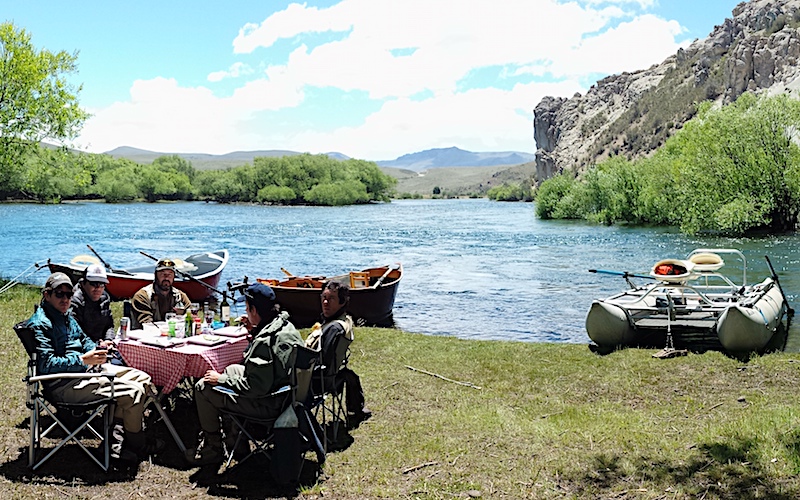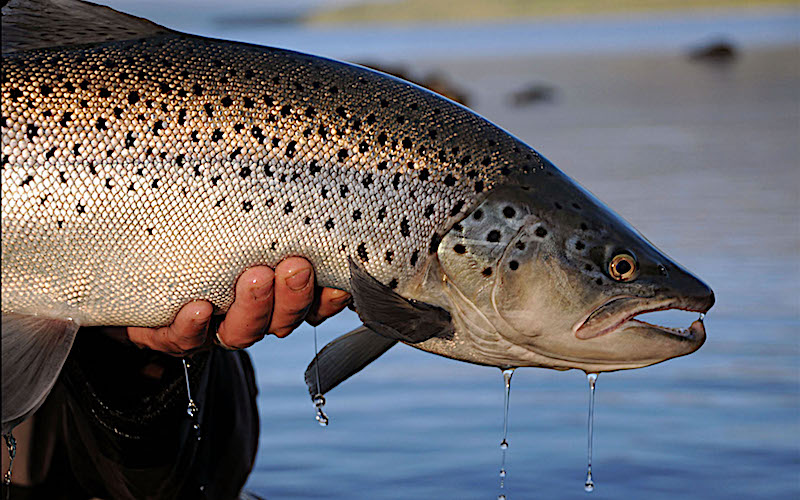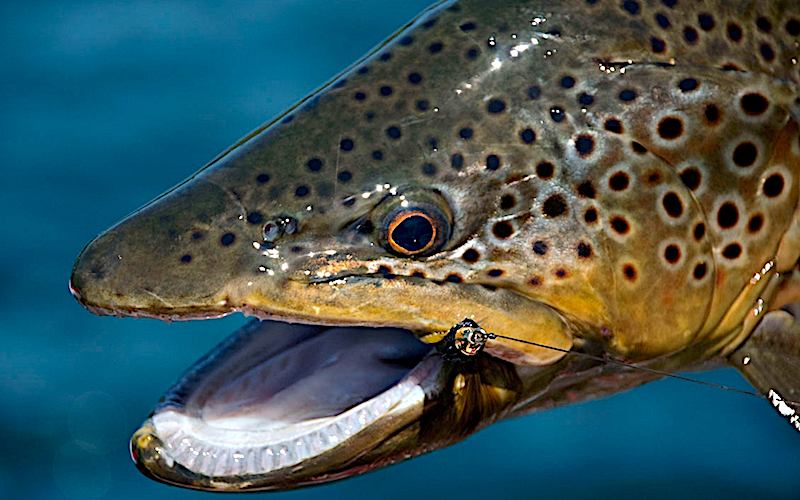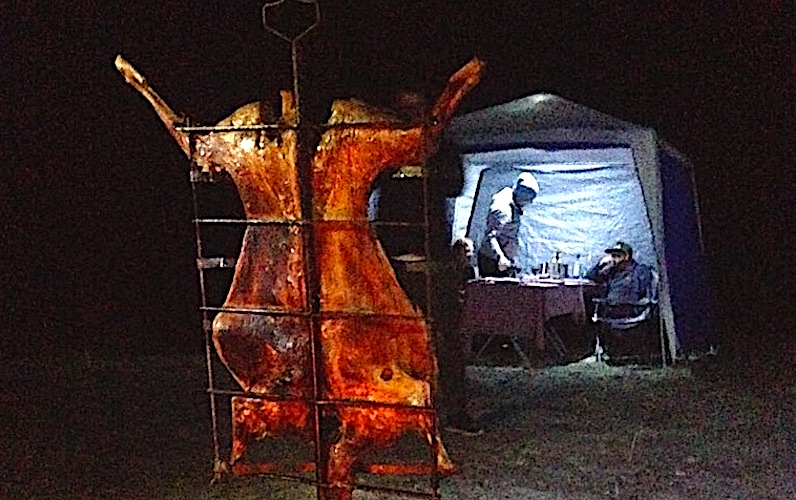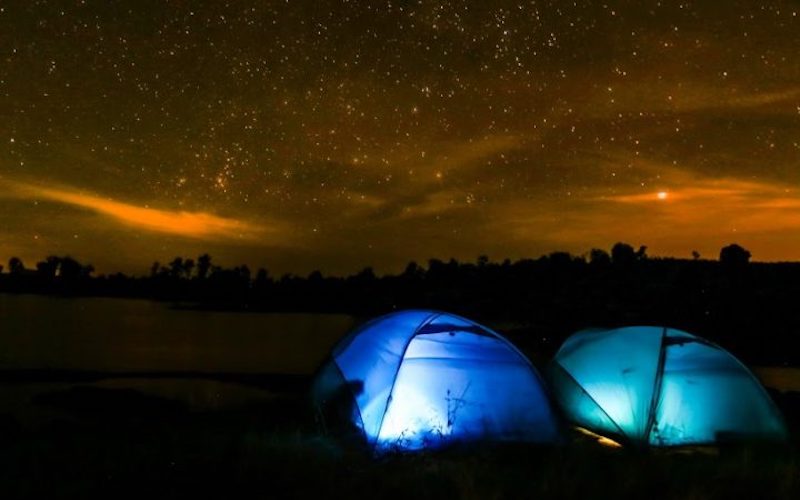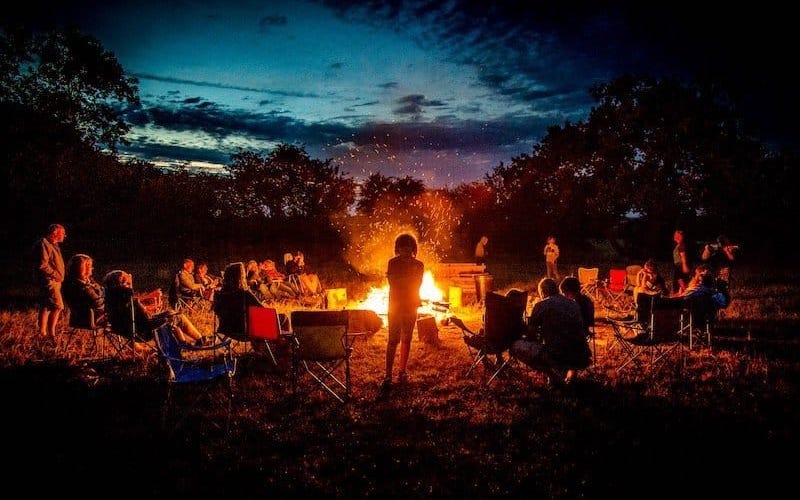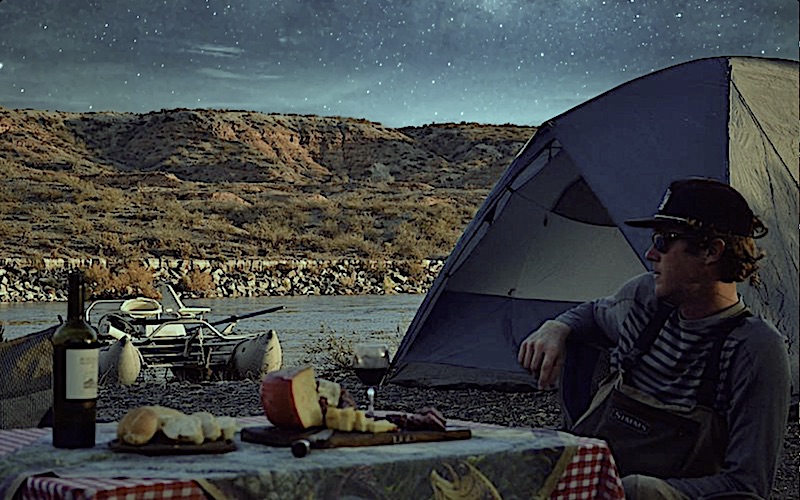In our rivers section, there is a brief description of the best rivers in northern Patagonia, in which we guide. The best choice of the fishing river will depend on certain variables, quantity of water, time of season, current climate…. For all these reasons, we ask that you trust the suggestions of our guides.
North Patagonia Rivers
Top waters in north Patagonia!
We will decide with you where to fish, for which we will take into account the wishes and capabilities of each client.
Contact usMANSO
COLLON CURA
The Collon Cura presents matchless features and structures, during its length this large river receives waters from various other tributries such as Aluminé, Chimehuin, Malleo, Caleufu, Pulmarí, Quillén, Quillquihue and Quemquemtreu. This patagonian steppe river, home of resident wild rainbows, browns and patagonian perch, presents willowed lined banks, sand cliffs and hills which forge an attractive landscape. One interesting feature on this river structure is the fact that it flows into a huge reservoir that is packed with huge trout and is home to an abundant ‘puyén’ minnow population.
These minnows are highly productive food for trout and will migrate upriver during the fishing season attracting all kinds of big healthy trout both from the reservoir and the Collon Cura. Other two fascinating food factors featured by the Collon Cura are the green inch-worms falling from the willows along the banks which takes place between December and February as well as its healthy ‘pancora’ crab population. All these elements are essential to this river healthy fish-life, not to mention the residence grass-hoppers, terrestrials and the daily mayfly, stonefly and caddis hatches. Such diversity has been appreciated for many anglers over the years, who wouldn’t want to miss their yearly fishing crusade to the enchanting Collon Cura.
CHIMEHUIN
The Chimehuín is a medium-sized river that rises in Huechulafquen lake and flows for about 40 miles till it joins the Aluminé, giving rise to the Collón Curá. Being one of the first fly fished rivers in Patagonia and thanks to its extraordinary formation, the Chimehuín is the most famous fly fishing river in Argentina; nowadays it’s one of the most researched rivers and counts with a huge amount of available information.
The Chimehuín yields rainbow and brown trout weighting from 1 to 6 pounds, although it’s not unusual to land 12+ pounders or even larger fish. We often choose the lower section of the Chimehuin for expeditions due to its inaccessibleness, which allows a low fishing pressure.
Available for all fishing techniques and harmonious weather conditions during the whole season makes Chimehuin an absorbing camp expedition alternative.
CALEUFU
This rivers begins in the confluence of the Rivers Filo Hua Hum and Meliquina. At first you will find heavy water big boulders, acting as a mountain river running agresive down the canion. The fishing in this waters is mainly towards the shores were the big browns hang out, you have to be fast and right on the target, everything is moving fast and you don’t want to miss a spot, specially during the run off the moment of the high water in the Caleufu. Once you start getting into the middle section of the river the water slows down more and also adquires better shape, runs, pools, pockets alauds to fish it a bit differently.
There are more fish spread out trough the all river and delicate techniques take place. In the lower water the rivers braids out eaven more, forming lots of islands, side channels, riffles, runs. This sections gets easily affected for the big water during the spring, and later on the summer you will find new channels were many times trout get trapted by natural causes, look out for them.
The Caleufu is a great river to fish, specially at the first months of the season were floating it is one of the best options, this can take 1 or 2 camping nights. It is well known for the quantity and cuality of its brown trout, they usually take big and heavy flies. The surface activity increases in the way you go further down the river. At the end of the summer and beginnings of fall, minows of pejerrey, trout and puyen start coming out of the artificial lake were the Caleufu dumps into. This schools of minows provocs a frenesi in the rainbows and browns chasing them up and down the river.
MALLEO
The Malleo river rises at the Tromen lake, originated by the melted waters of Volcan Lanin Glacier. This ice-cold waters, rich in minerals, provides an appropriate environment for a huge variety of insects, reason why Malleo is distinguished worldwide for dry fly fishing. Stream conditions vary between slow flowing in the upper meadow areas and faster waters on the lower reaches, surrounded by willow lined banks which arise perfect conditions for dry fly fishing.
Trouts are sensitive to hatches which occur regularly throughout the season; caddis, stoneflies and small terrestrials in the early season and mayflies toward the end, March and April. During clear weather days, surface activity on the Malleo an anglers dream come true. The size of these fish is between 15 and 17 inches, some may grow up to 24+; it´s not rare for an anglers to land from 6 to as many as 40 fish on a good day.
PICHILEUFU
Pichi in Mapuche language (the indigenous people of Patagonia) means small, and Leufu means river. The Pichileufu is nearly an hour's drive from Bariloche, in an area called Steppe. It is a desert, where vegetation and landscapes are very different from those closest to the Andes. Here reigns volcanic rock formations and small canyons formed by spring streams. On the way to the river we will see "Los Juncos" Natural Reserve. A small lagoon, with were nest many different kind of birds. The railway station Perito Moreno The geomorphology the "Pichi" makes it perfect for fly fishing. With the right level of water, there is a fish behind each rock. The best time to visit this beautiful river is November and December. It´s the smallest river we fish in the area. Due to its small size it´s convenient to wade it, most times in shorts and sandals. Light equipment such as 4 or 5 weight rod are recommended for this river.
It is an ideal place to refine our fishing techniques, use a floating line, and search through our dry flies box. On sunny days, a grasshopper hitting the water right under cliffs will let you catch the largest browns of this river!!
TRAFUL
It is one of the most exquisite conformation courses in our Patagonia, which together with the fact of having Salmo Salar Sebago (Locked Salmon) among its inhabitants has projected it among the most internationally renowned Argentine rivers. It is born in Lake Traful and after a short journey, it empties into the Alicura reservoir.
It is characterized by being a medium-sized river, with a width that ranges between 5 meters. and 18 mts., with a quite appreciable slope and a conformation in which strong rapids and slides prevail nuanced by spectacular pools or pools. Its bed is rocky, prevailing medium-sized pebbles and its waters are extremely transparent. Its two main tributaries: the Río Minero and the Arroyo Cuyín Manzano.
It is the only river in the region where the Enclosed Salmon not only survived, but also adapted significantly.
The coasts in general, are populated with dense vegetation and in several sectors, because it runs boxed in, or because the course is interrupted by large rocks, it becomes difficult to travel. The spectacular scenery of the valley through which the course flows, only increases the mystique of this river, given by the immaterial presence of great national and foreign fishermen who experienced the benefits of this river, in its golden times.
LIMAY
The Limay River starts at the Nahuel Huapi Lake and forms the largest basin in Patagonia, 270 miles long. Starting in a transition area between the forests and the steppe, Limay means "clear water" in the local language. It's a big river, with many branches and islands, flowing from deep pools, sand cliffs and rolling hills to fast shallow waters; river shores are covered by willow trees, that gives shelter for trout and hold good food.
The Upper Limay is the dreams river; dries, attractors, terrestrials, nymphs & streamers, wading, floating, matching hatches, hunting monsters, single-handed & spey rods, strong rainbows, monster browns, prolific and interesting, every fisherman’s river.
During summer, massive hatch of caddis and mayflies cover the river, giving us the chance to fish for rising trout. Some eddies along the river harbor more than fifty big rainbows, between two and five pounds, feeding close to surface. Light elk hair caddis in sizes 16 to 20 and long leaders with 5X tippet are irresistible for this trout and assures you a strike.
During the mating season, large brown trout migrate from the lake and after feeding on Pancoras and Samastacus (fresh water shrimps), they gain a lot of weight, reaching up to more than 14 pounds. The best time to find these monster browns in the river is the end of the season, late March and April and May, when they start migrating into the rivers looking for spawning beds. There are always chances to catch one of the large fish in the river during the summer, however it might be more difficult.
The Limay river is full of resident browns & rainbows as well, often located on shallow waters, close to the shore, or behind rocks and willows. We attract them with dry flies & streamers and taking advantage of being high fishing from the boat, in the extremely clear Limay waters, you will see them coming towards your fly. We are glad to say this river is chosen by argentineans as the best in our county.
FAQs
Frequently Asked Questions
-
-How to choose the rivers for fishing days?
-
-When is the best time for fishing?
There is good fishing throughout the season, it will depend on the river you choose, weather, etc. Both at the beginning and at the end of the season there are many chances to catch some trophy trout. Trust our team of guides for the best choice of the river to fish.
